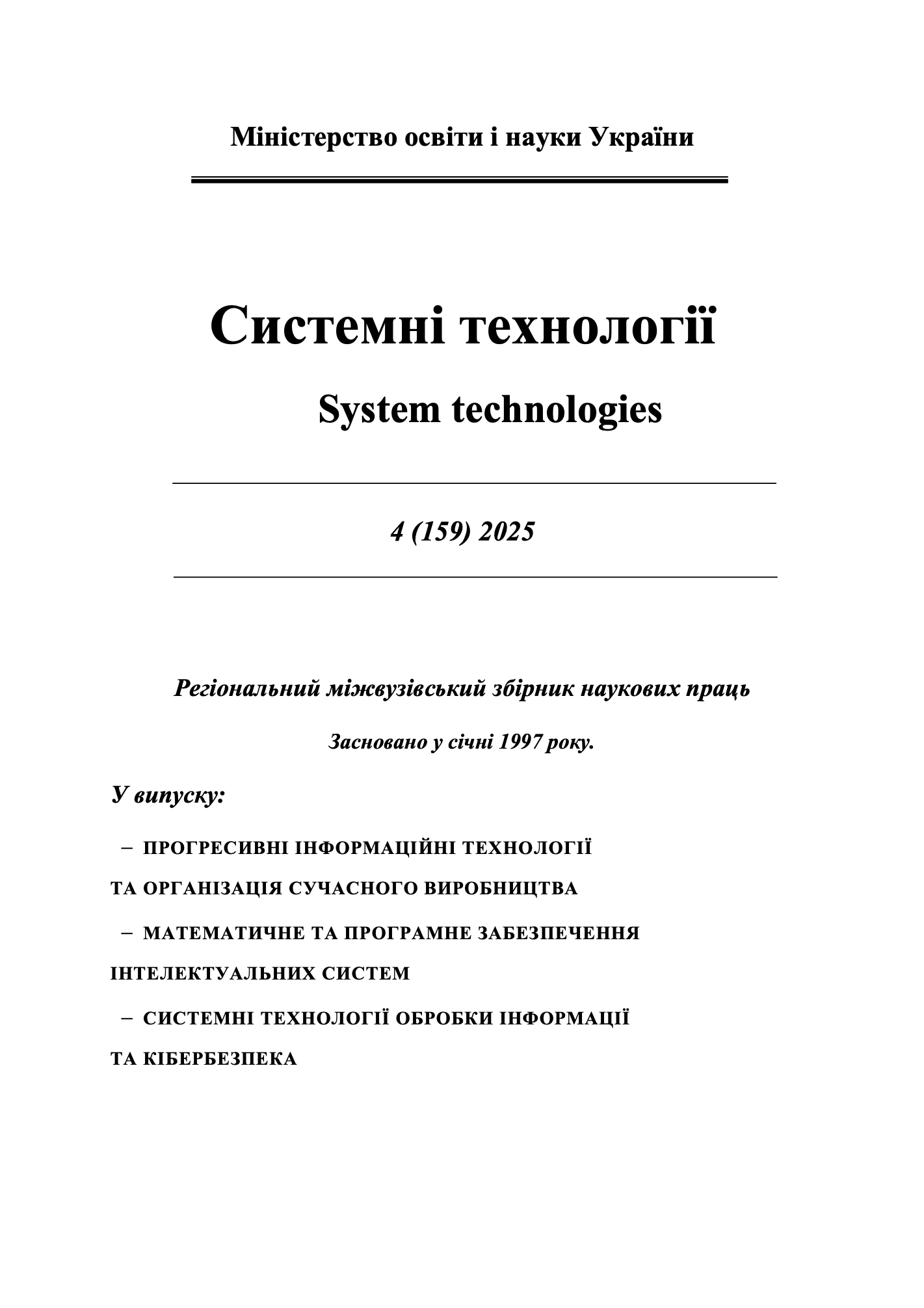DISTRIBUTED COMPONENT-ORIENTED PRODUCTION SYSTEM FOR CONTROLLING OF HIERARCHICAL OBJECT
DOI:
https://doi.org/10.34185/1562-9945-4-159-2025-01Keywords:
production system, distributed control system, industrial dispatching control system, inference engine, CLIPS.Abstract
Existing methods of controlling industrial dispatching control systems (IDCS) lose their effectiveness due to the increase in their complexity. Therefore, research for the im-plementation of a distributed component-oriented production control system for dynamic IDCS is relevant and has practical significance. The purpose of the work is to present the ar-chitecture of a distributed component-oriented production control model for dynamic IDCS for controlling an object in real time. Conclusions: 1) a four-level IDCS architecture is pro-posed, which allows implementing the functioning of complex hierarchical automation ob-jects; 2) a production system architecture for the system level of automation is proposed, which consists of low-level, complex and system levels, and a production system architecture for automated control at the main server level, which consists of complex and system levels; 3) the presented models are tested on the IDCS test problem with three systems. Based on the results of comparing the control indicators according to the proposed production model and the finite state machine, the advantages of the proposed method were determined: an increase in correctness by 16% and an increase in the share of fully automated actions by 15%.
References
Lievi, L., Zyma, O. (2021). Suchasni intelektualni metody modeliuvannia skladnykh tekhnolohichnykh obiektiv [Modern intellectual methods of modeling complex technological objects]. Systemy upravlinnia, navihatsii ta zviazku – Control, navigation and communication systems, 1, 63, 49–53 [in Ukrainian]. https://doi.org/10.26906/SUNZ.2021.1.049.
Kong, X., Liu, X., Ma, L. et al. (2019). Hierarchical Distributed Model Predictive Control of Standalone Wind/Solar/Battery Power System. IEEE Transactions on Systems, Man, and Cybernetics: Systems, 49, 8, 1570-1581. https://doi.org/10.1109/TSMC.2019.2897646.
Shakir Ali Ali, A., Ebrahimi, S., Ashiq, M. et al. (2022). CNN-Bi LSTM neural network for simulating groundwater level. Computational research progress in applied science & en-gineering (CRPASE), 8, 1-7. https://doi.org/10.52547/crpase.8.1.2748.
David, T., de Souza, T., Rizol, P. (2023). Expert system: use of CLIPS software to evaluate solar energy for residences and businesses. Energy Inform, 6, 2.
https://doi.org/10.1186/s42162-023-00256-5.
Albatish, I., Abu-Naser, S. (2019). Modeling and Controlling Smart Traffic Light System Using a Rule Based System. International Conference on Promising Electronic Technologies (ICPET), 55-60. https://doi.org/10.1109/ICPET.2019.00018.
Magalhaes, S., Borges., R, Calcada, L. et al. (2019). Development of an expert system to remotely build and control drilling fluids. Journal of Petroleum Science and Engineering, 181. https://doi.org/10.1016/j.petrol.2019.04.094.
Shapovalova, S., Baranichenko, O. (2025). Modeling of functional processes between components of a hierarchical control object. Control, Navigation and Communication Sys-tems, 1, 79, 67-71. https://doi.org/10.26906/SUNZ.2025.1.67-71.
Riley, G. (2022). Adventures in Rule-Based Programming: A CLIPS Tutorial. Kindle Edi-tion, 200.
Downloads
Published
Issue
Section
License
Copyright (c) 2025 System technologies

This work is licensed under a Creative Commons Attribution 4.0 International License.















